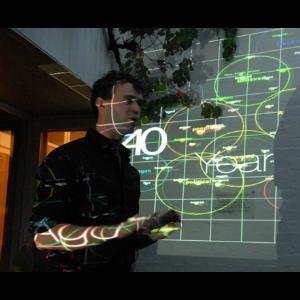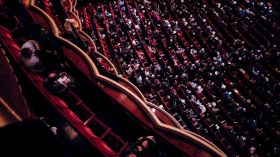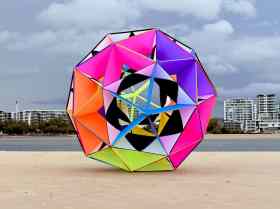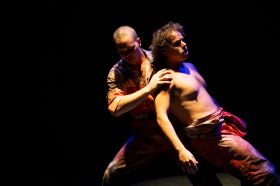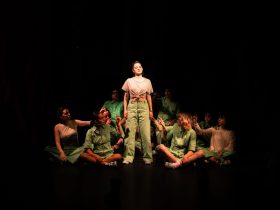One is considered logical, precise and objective. The other is seen as emotional, subjective and prone to fads and trends. To many, they are the Ying and Yang of civilisation. Science and the arts have long been pigeonholed as different faculties requiring different brain processes, but the pages of history tell a different story.
Surgeon and Nobel Prize recipient Alexis Carrel invented the “triangulation” method of artery stitching thanks to his schoolboy knowledge of embroidery. In 1922, physicist Niels Bohr used Cubism to revolutionise how electrons are studied. Fast forward to the modern day, and many artists and troupes are continuing to blur the boundary between the two faculties.
David Finnigan is a member of “Sci-art” performance group “Boho Interactive.” The Canberra based group create performances by meeting with researchers, reading up on specific scientific theories, and then presenting the challenging concepts to an audience. The result, says Finnigan is that the science bleeds through into the work.
“These concepts aren’t hard to grasp – if they were, we wouldn’t have a chance, because we’re all interested laymen rather than qualified scientists. Rather than make these issues emotional or matter to audiences, I guess we’re just trying to say: they’re right here. Let’s talk about them,” he explains.
The combination of performance art and science has sometimes made potential audiences wary.
“The most common misconception that we’ve had to counter is audiences assuming that the work will be too academic or difficult to comprehend for them. In reality, if anything in the show is unclear or confusing, that’s our fault and not the audience’s,” Finnigan says.
Nevertheless, both the “layman” audience and the scientific community are responding well to the performances. Their 2010 production True Logic of the Future asked the question: is there ever a point in time where freedom should be surrendered to a political dictator? This controversially divided audiences and often became heated.
“Some people agreed that we might reach a point where a dictator would be a more effective ruler than a two-party democracy. Other people said that we should never surrender our freedom, ever. Some people were adamant that the situation would never reach the point we depicted, while other people felt it likely that it would. It was a really fascinating debate, and one which we had no firm opinions on ourselves, so we were able to take part in it as much as anyone else.”
As for the scientific community, Boho Interactive performed their show A Prisoner’s Dilemma at the Asia-Pacific Complex Science Conference in 2007.
“It was great, because they’re not used to seeing their work reflected as theatre or performance, so they were quite passionate about it.”
Though some academics are critical of the balance of arts and science, the consensus amongst the scientific community is that arts should be welcomed with open arms.
The Queensland Brain Institute offers an artist-in-residence program alongside their neuroscientists. This has resulted in at least two collaborations, both of which are paraded on the website.
The Australian government also sees the potential of “sci-art”, offering artists and musicians an annual scholarship to Antarctica to inspire and create works of art, and has done so since 1985.
Internationally , scientists and artists are working together in Indonesia to help solve the overwhelming challenges faced in health and the environment.
As for Boho Interactive, their next show explores issues of epidemiology and disease spread. The group recently travelled to Geelong to tour the Australian Animal Health Laboratories as part of their research.
“It was an incredible experience, and it continually amazes me how generous people are with their time if you’re genuinely interested in the work they’re doing.”
The Art of Science
While one is considered logical and precise, the other is emotional and prone to fads and trends. So, can science and art ever find harmony?
2 Aug 2012
[This is archived content and may not display in the originally intended format.]
